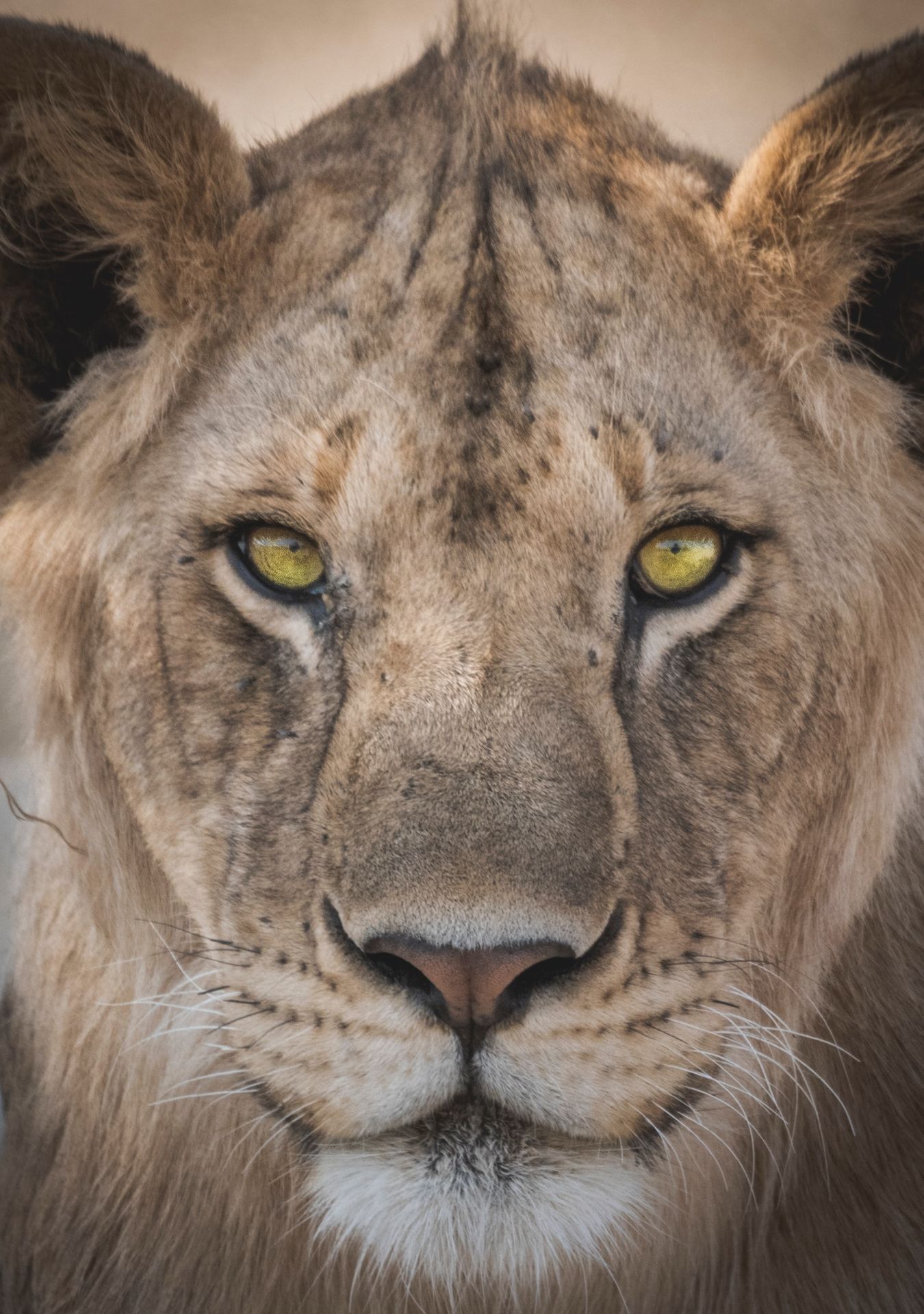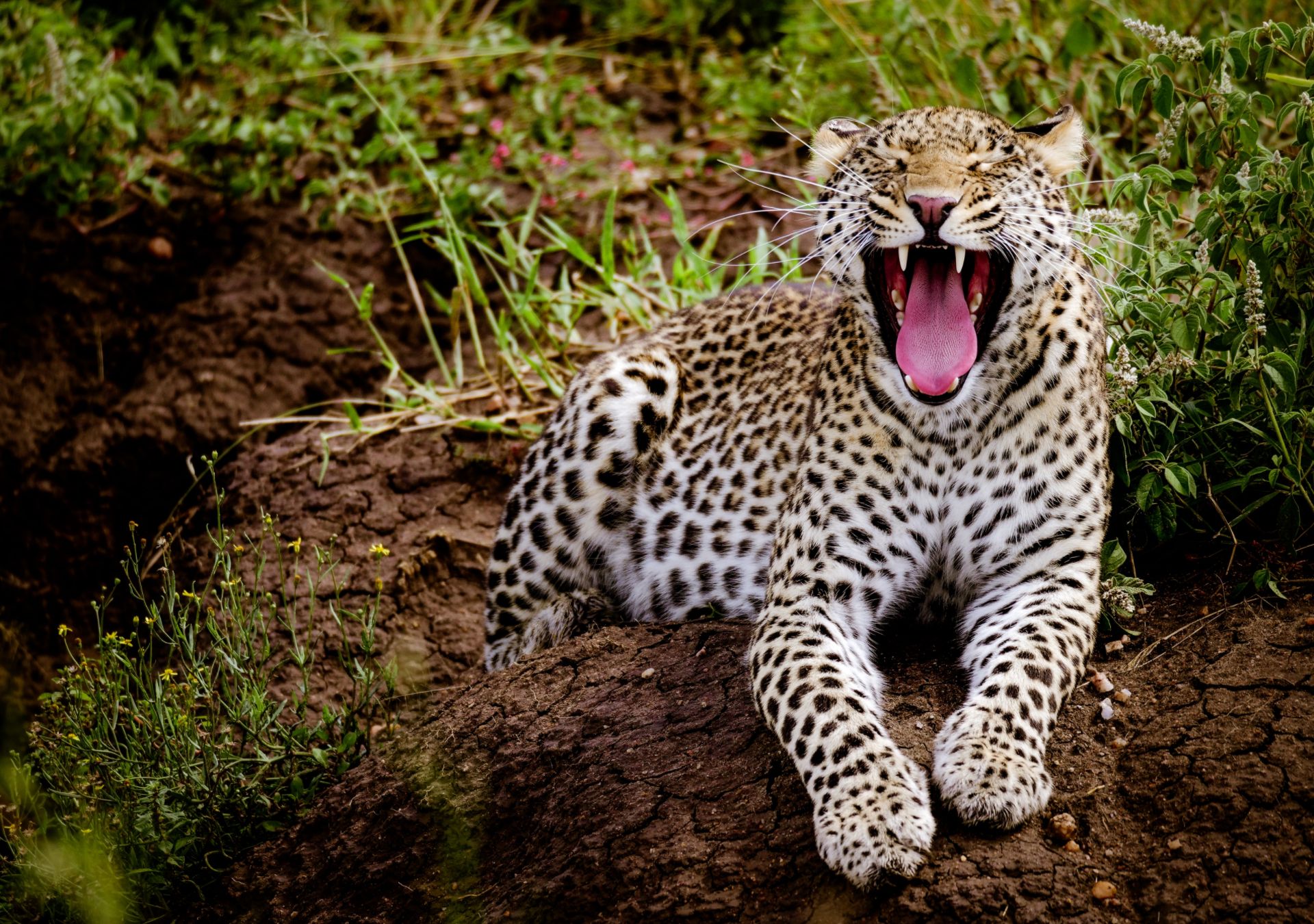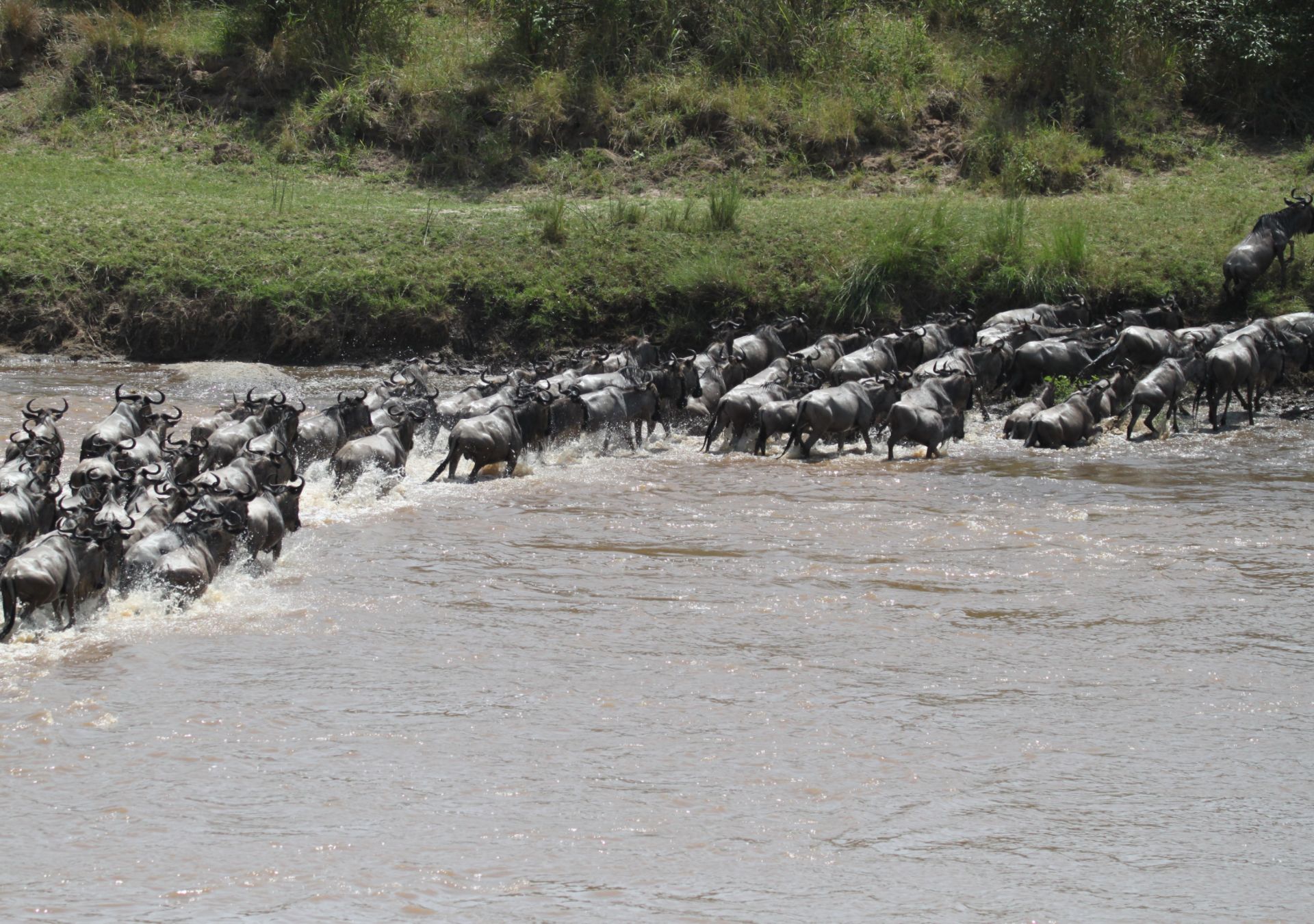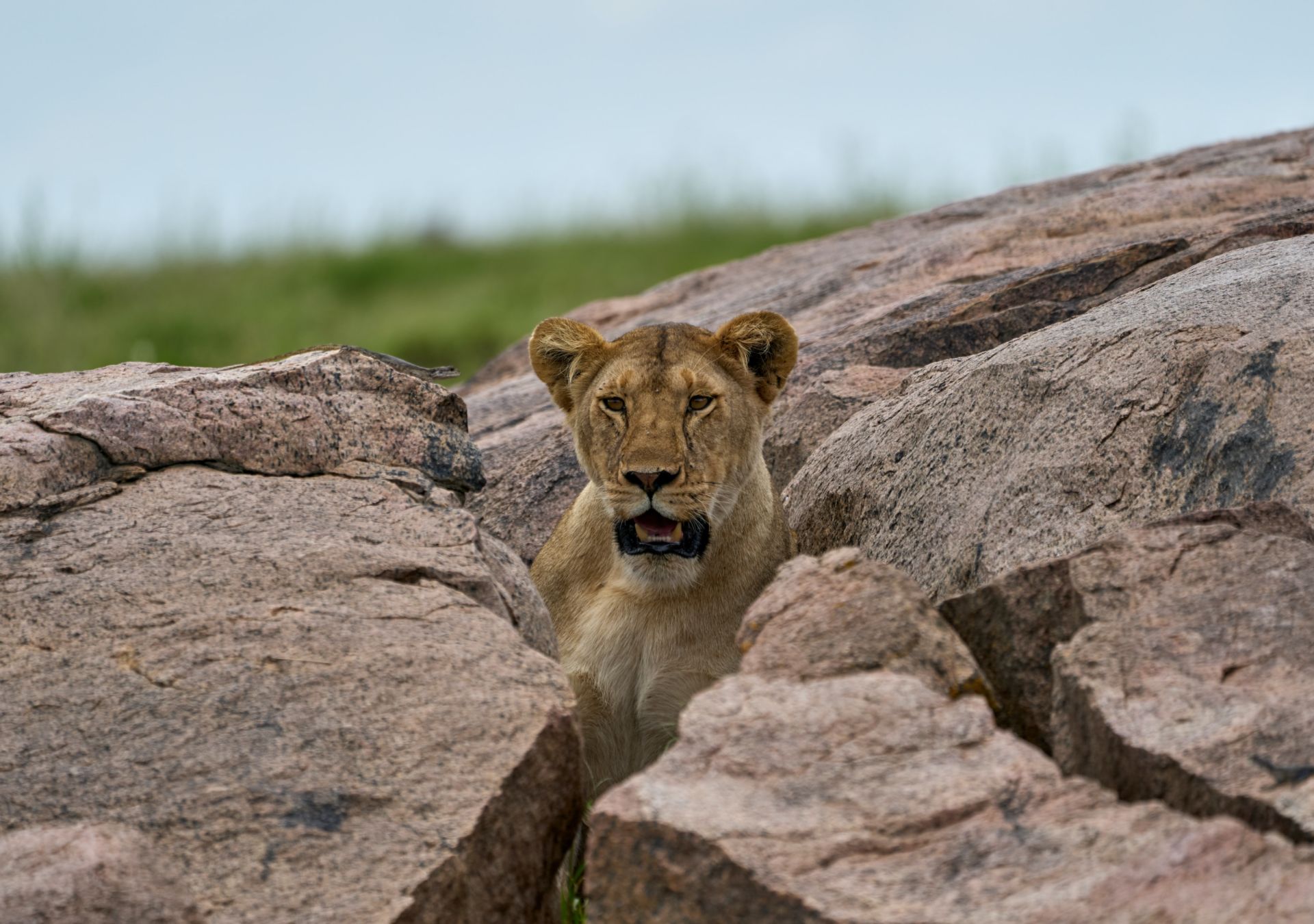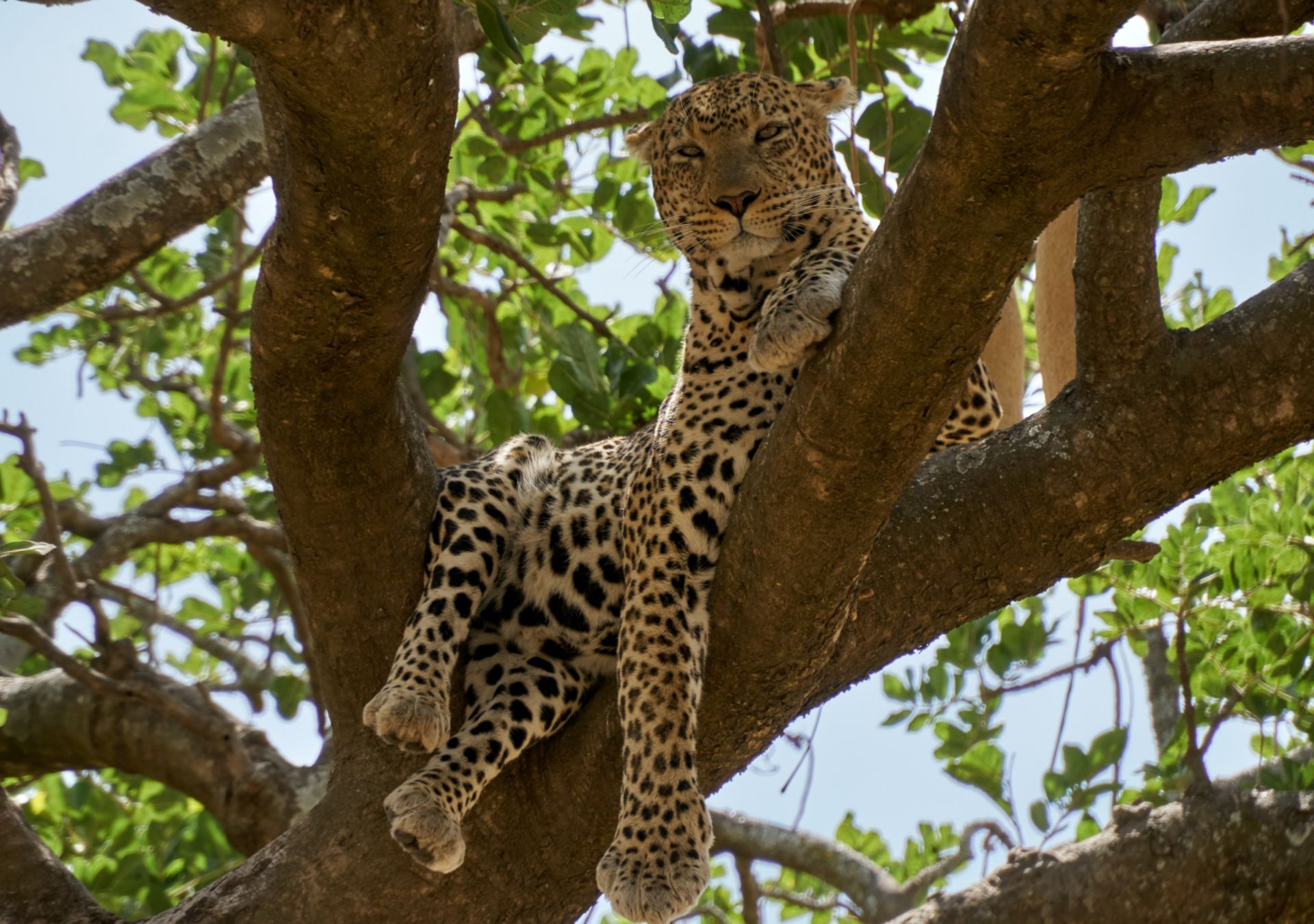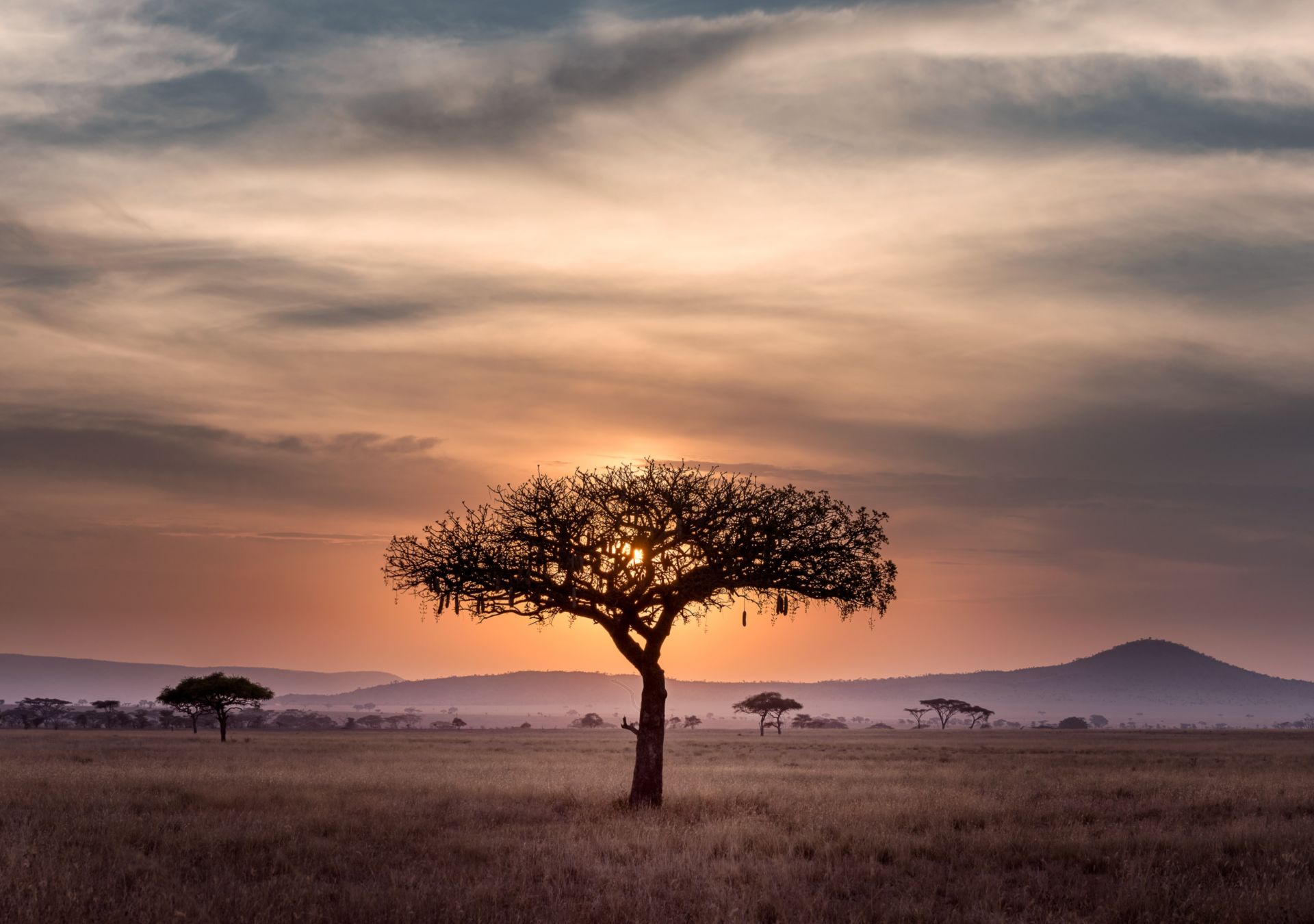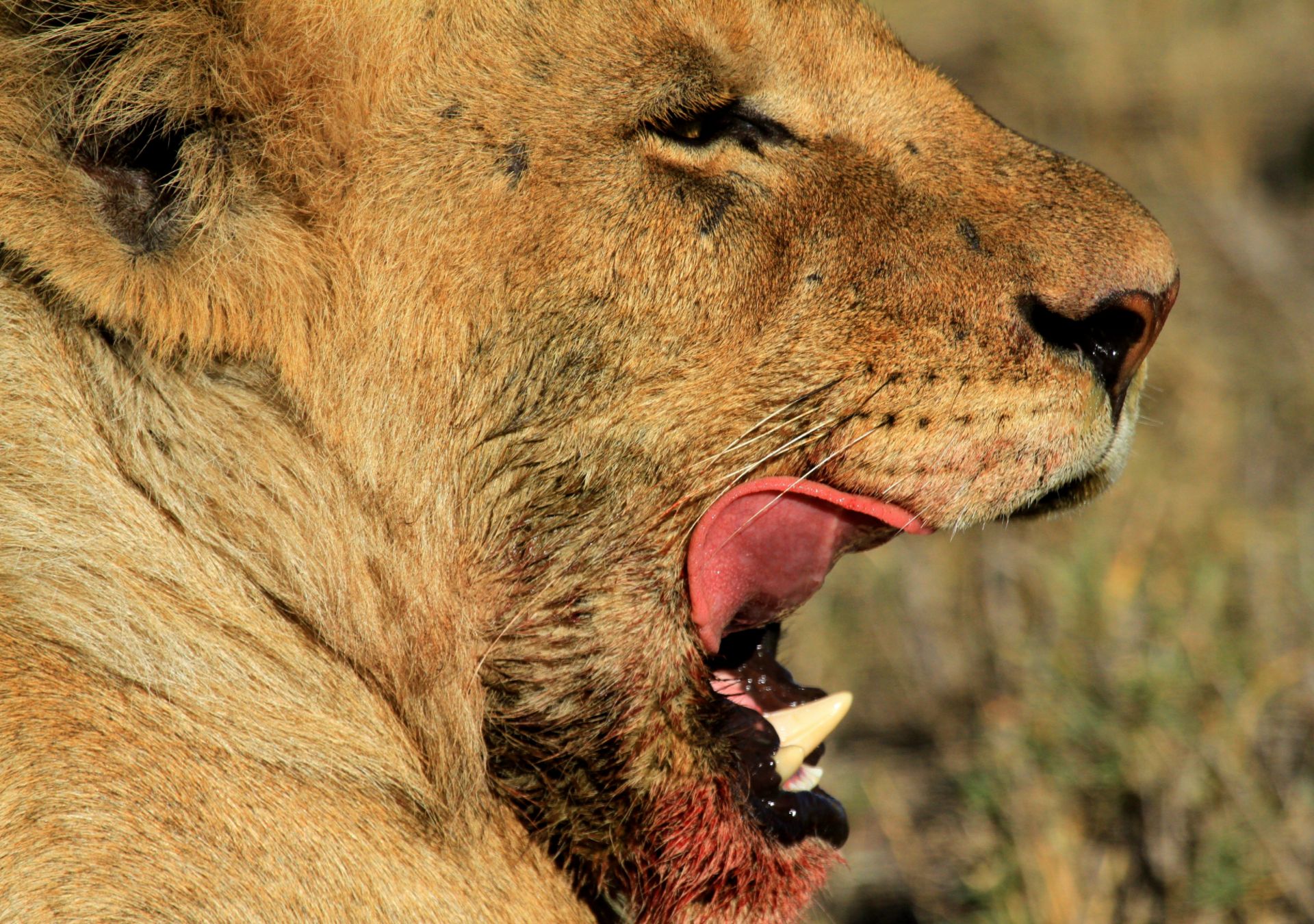Area: 14,750 km² | Established: 1951
Serengeti National Park
Visitors per year
350,000+
Famous for
Great Migration
Region
Northern Circuit
The Serengeti is arguably most known for its migration. During the short rains in October and November, over a million wildebeest and 200,000 zebras migrate south from the northern hills to the southern plains, then swirl west and north following the long rains in April, May, and June. The ancestral drive to move is so powerful that no drought, gorge, or crocodile-infested river can stop them.
The Serengeti National Park is a UNESCO World Heritage Site overflowing with wildlife, with over 2 million ungulates, 4000 lions, 1000 leopards, 550 cheetahs, and 500 bird species inhabiting a 15,000-square-kilometer region. Explore the boundless Serengeti plains lined with trees and kopjes from which majestic lions rule; marvel at the Great Migration; or track down an elusive leopard in a riverine woodland with us on a safari. Alternatively, take a hot air balloon tour to see everything from a bird’s eye view and soar over the plains at sunrise. There are lodging alternatives for every budget, and the sound of lions roaring at night is included.
BEST TIME TO VISIT
Serengeti National Park
The best months to visit Serengeti National Park are January to February or June to September, yet you should time your visit to coincide with the Great Migration’s migration.
The months of January and February
The greatest time to see the Southern Serengeti and the Ngorongoro Conservation Area is during the winter months. Although most visitors enter the park from the south, due to a lack of wildlife for much of the year, this section is often disregarded by tourists. The herd is drawn back to its mating sites by the brief rains that fall in November. During the winter, these huge grasslands are transformed into a snow wonderland.
March to May
The rainy season in the park begins in the spring. Because the rain has deterred most people, you can expect to find lower costs on excursions and hotels. However, you should keep in mind that most semi-permanent camps and some lodges restrict their doors to guests during this season, so prepare early.
From June to September,
The Great Migration migrates north during the summer and fall, when the plains are ablaze with vibrant flora. During the early summer months, the herd is most likely to be found near the Grumeti River in the park’s Western Corridor, though a smaller rogue group may be seen in the Lobo Valley. Observing the grazers take on the river’s deadly crocodile population can be a once-in-a-lifetime experience. Wildebeest and zebras meet with elephants and giraffes in the magnificent Lobo and Bologonja Springs in the park’s northern section between July and September.
From October through December,
The return of The Great Migration to the southern plains is signaled by brief, erratic rain showers. Spend the most of this month at the Western Corridor near the Grumeti River or at the Mbalageti Tented Lodge, a permanent campground with panoramic views.


